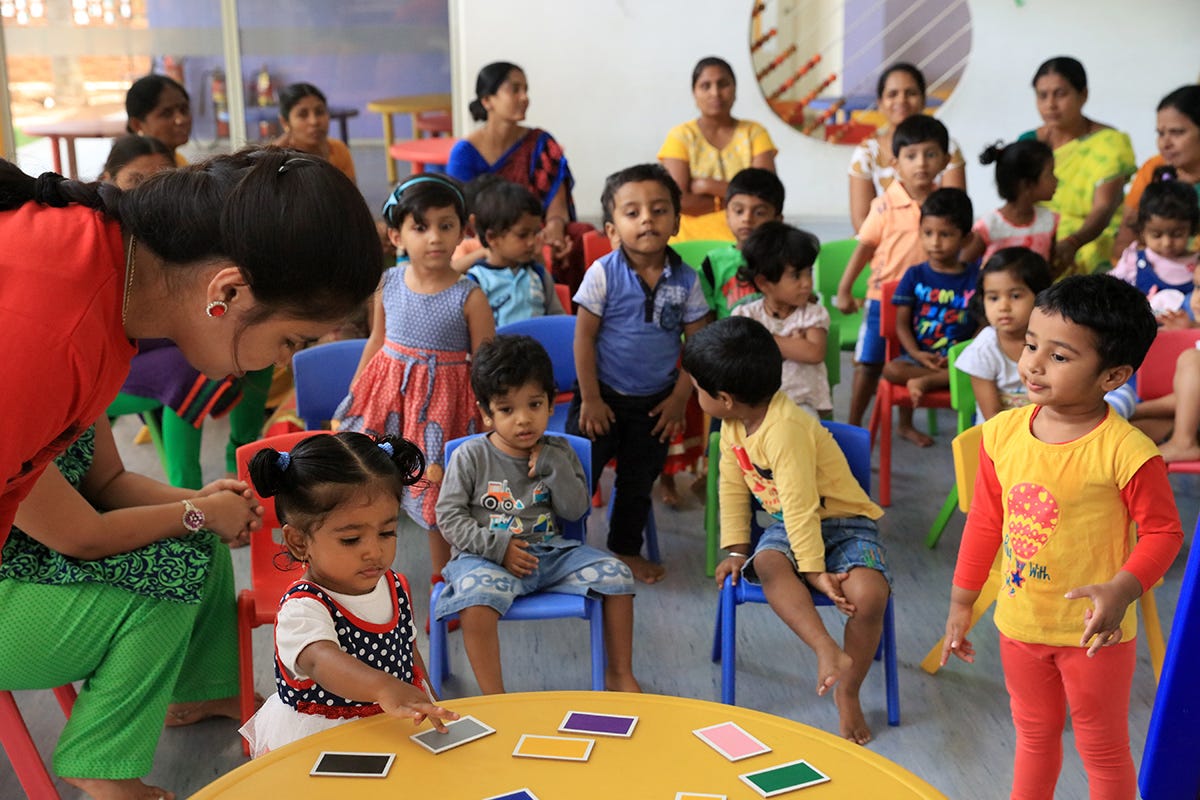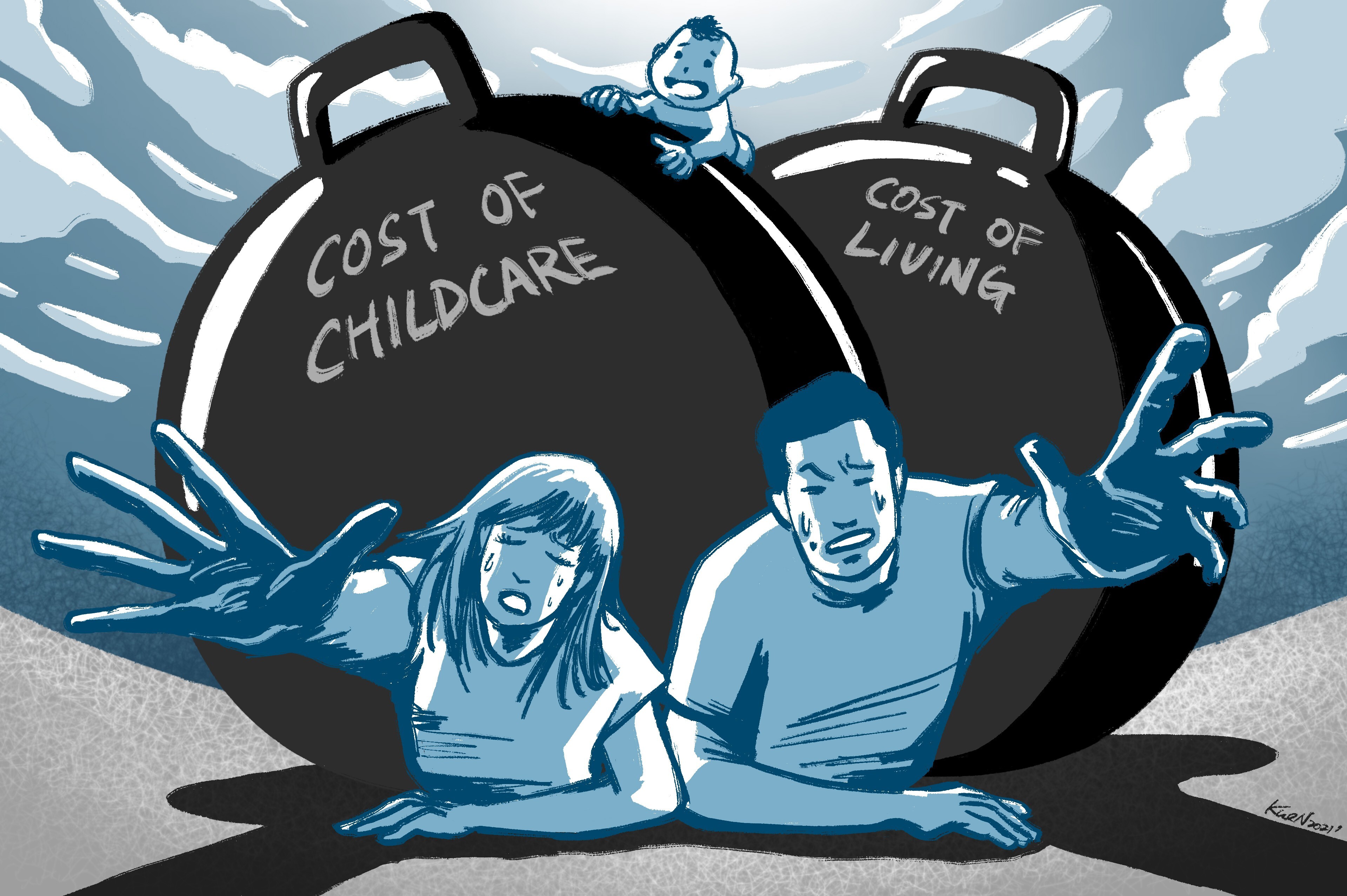China Records The Highest Childcare Costs In The World; What About India? How Child Care Costs Are Skyrocketing Globally
China, in the current scenario, finds itself confronting a daunting challenge - the exorbitant expenses associated with raising children. A recent report from the esteemed YuWa Population Research Institute reveals that China ranks among the most expensive places globally to nurture a child, relative to its GDP per capita. Meanwhile, the rising costs of raising children in India and globally have also escalated tremendously. This phenomenon of escalating childcare expenses has huge implications for families and economies alike.

Parenting comes with a multitude of joys and responsibilities, but one aspect that is weighing heavily on families worldwide is the escalating Childcare cost.
From education expenses to childcare fees, the financial burdens faced by parents continue to mount, impacting households across various socioeconomic backgrounds.
A recent report from a leading Chinese think tank has revealed that China is grappling with the soaring expenses associated with raising children.
According to the Beijing-based YuWa Population Research Institute, the financial burden of nurturing a child until they reach adulthood stands at a staggering 6.3 times the country’s GDP per capita.
This figure sharply contrasts with other developed nations like Australia, France, the U.S., and Japan, where the equivalent ratios are notably lower.
Moreover, the report sheds light on the adverse impact of child-rearing on women’s participation in the workforce.
While men’s economic activities largely remain unaffected, women experience a significant reduction in both paid work hours and wage rates.
The institute’s co-founder, Liang Jianzhang, emphasizes that the current societal landscape in China poses formidable challenges for women considering motherhood, citing exorbitant expenses and the struggle to juggle familial responsibilities with professional aspirations.

Thus, the reluctance to bear children among Chinese citizens has reached unprecedented levels, with the nation witnessing a consecutive decline in its population for the second consecutive year in 2023.
The decline is deepened by a sharp decrease in childbirths, falling to nearly half the number recorded in 2016. Many women are opting out of motherhood due to the prohibitive costs of Childcare, reluctance to sacrifice career advancement or marital prospects, and the prevalence of gender discrimination in various spheres of life.
The report also looks into the impact of Childcare on women’s employment dynamics, revealing that mothers of young children endure a considerable reduction in working hours, coupled with substantial wage losses.
On average, women caring for children aged 0-4 witness a stark decline of 2,106 working hours and incur an estimated wage loss of 63,000 yuan ($8,700). Additionally, having a child precipitates a notable 12-17% reduction in women’s wages, further exacerbating the financial strain on families.
Thus, YuWa Population Research Institute stresses the urgent need for comprehensive policy interventions at the national level to alleviate the burdens associated with childbearing.
These measures include financial incentives such as cash subsidies and tax relief, enhanced childcare infrastructure, equitable parental leave policies, access to foreign childcare assistance, flexible work arrangements, and ensuring reproductive rights for single women.
As outlined by the report, the implementation of these measures holds the potential to bolster China’s declining birth rates and avert the impending demographic crisis.
With the total fertility rate languishing at a mere 1.0, China faces the grim prospect of rapid population decline and aging, which could deeply impact its innovation capacity and overall national resilience.
Therefore, addressing the challenges of child-rearing is not only a socioeconomic imperative but also a strategic necessity for sustaining China’s long-term prosperity and vitality in the global arena.

The dilemma
Meanwhile, In contrast, Hong Kong experienced a modest population growth of 0.4% in 2023, reaching a total of 7.50 million inhabitants, as announced by the government.
This upswing, amounting to an increase of 30,500 individuals from the previous year’s 7.47 million, was fueled by a net influx of returning residents and individuals participating in residential schemes. This growth marks the second consecutive year of population expansion for the financial hub since the onset of the pandemic.
The resurgence in population comes at a pivotal time for the Chinese special administrative region, as efforts are underway to revitalize its economy and enhance its global appeal following three years of stringent COVID-19 regulations.
Additionally, the aftermath of anti-government protests in 2019 and Beijing’s subsequent enforcement of a far-reaching national security law in 2020 has posed challenges to Hong Kong’s reputation and economic stability.

Rising Costs of Raising a Child in India
The financial burden of raising a child in India has become increasingly apparent, with schooling expenses alone amounting to significant sums.
According to research conducted, the total expenditure involved in educating a child in a private school from the age of 3 to 17 is a staggering Rs 30 lakh. The hefty cost indicates the expensive nature of the education system in the country.
Economists point out that the escalation in private education costs has not been adequately reflected in inflation data. The current inflation index, which is based on a decade-old model, assigns a mere 4.5% weightage to education expenses.
Meanwhile, organizations like EduFund highlight that education costs in India have surged by approximately 10-12% between 2012 and 2020. The rising tuition fees, along with periodic increases in transportation and examination fees, significantly strain parents’ budgets.
Global Escalation of Childcare Expenses
Across the globe, the inflationary trend is driving childcare costs to unprecedented heights, posing significant challenges for families.
According to ECA International, average daycare fees surged by 6% worldwide in 2023, with even steeper increases observed in certain regions like the United States, where costs soared by 9%.
Addressing this surge in childcare expenses is crucial for revitalizing economies, fostering growth, and cultivating more equitable societies.
The disproportionate impact of escalating childcare costs is felt by women, who often bear the primary responsibility for childcare duties-faced with the dilemma of balancing work and childcare expenses, many women are compelled to reduce their working hours, forgo career advancements, or exit the workforce altogether.
This phenomenon has led to a decline in workforce participation among women and, consequently, a loss of economic output.
In the United States alone, an estimated $237 billion annually is lost due to women scaling back their work commitments for childcare purposes.
Similarly, in the European Union, this figure stands at around $255 billion (€242 billion).
Studies consistently stress that increasing female workforce participation not only enhances economic productivity but also diminishes levels of inequality within societies. Thus governments and corporations are exploring various strategies to support working parents globally.
In Japan, some companies include subsidized Childcare and family-oriented housing within their employee benefits packages. Meanwhile, the UK government is contemplating an expansion of subsidized childcare rates.
Americans currently bear one of the highest childcare expenses worldwide in terms of income percentage, a situation aggravated by escalating costs.
In 2023, the average weekly daycare cost for a single child in the US rose to $321, up from $284 the previous year.
In urban hubs like New York City, these rates soar even higher, around 16% above the national average. As a result, the United States struggles with one of the lowest female workforce participation rates among developed nations.





